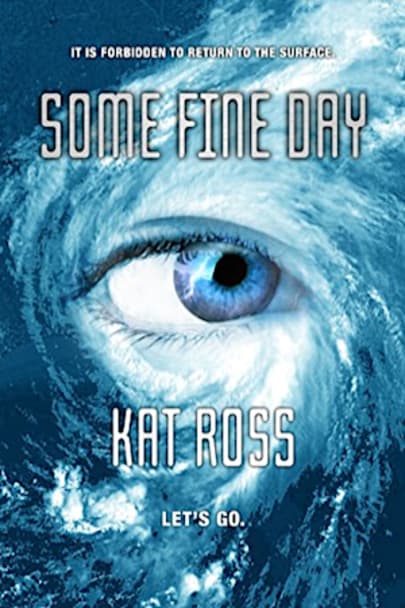A generation ago, continent-sized storms called hypercanes caused the Earth to flood. The survivors were forced to retreat deep underground and build a new society.This is the story that sixteen-year-old Jansin Nordqvist has heard all of her life.Jansin grew up in a civilization far below the Earth’s surface. She’s spent the last eight years in military intelligence training. So when her parents … when her parents surprise her with a coveted yet treacherous trip above ground, she’s prepared for anything. She’s especially thrilled to feel the fresh air, see the sun, and view the wide-open skies and the ocean for herself.
But when raiders attack Jansin’s camp and take her prisoner, she is forced to question everything she’s been taught. What do her captors want? How will she get back underground? And if she ever does, will she want to stay after learning the truth?
Revised edition: This edition of Some Fine Day includes editorial revisions.
more



The popularity of post-apocalyptic fiction is an interesting facet of the current literary landscape. Why this? Why now?
Some aspects of it are self-explanatory. It’s the perfect way to set the adolescents in a YA novel free from adult/parental restraints, in a kind of modern desert island scenario. In a time when desert islands are few and far between, post-apocalyptic stories offer a return to something deeply satisfying to the human storytelling mind.
And of course, there’s the fact that we do seem to be hurtling towards an apocalypse in real life. Fiction, as always, is a way to explore the deeper truths, showing ourselves our deepest fears while also offering us the comforting possibility of a happy ending. People yearn for heroism without, most of the time, having the courage to go out and get it, and this is a way to fantasize about being *forced* into heroism through no fault of your own.
Some part of it may also, I suspect, be wishful thinking. A major recurring feature of most of these post-apocalyptic stories is a dramatically depopulated landscape. Humans go from overrunning the planet, to being few and far between. All of a sudden, the hero *matters*, in a way that she just can’t in a world with more than seven billion people in it. In our current overcrowded state, individuals cease to have much meaning, and we are all, even if only subconsciously, aware of our own insignificance against the backdrop of so much teeming humanity. But in a world where 90% of the human population has been wiped out, the survivors suddenly start to have meaning again.
All that is background musings on “Some Fine Day,” which is a engaging post-apocalyptic YA novel about a world in which climate change has forced humanity to take refuge underground. The world elites fled to their bunkers when hypercanes made the surface unfit for human habitation, and they have created a high-tech and borderline fascist society in the elaborate underground cities they created. When sixteen-year-old Jansin, the daughter of a general and herself a cadet in an elite military academy, goes on a very special vacation to the surface of the planet, she is kidnapped by the ragged remnants of humanity that have, in contradiction to all the official propaganda she had been fed, been left to fend for themselves. What follows is a combination of castaway adventure and escape story.
“Some Fine Day” borrows heavily from the tropes of YA romance and adventure stories, but it does so in a way that is satisfying rather than derivative. Teenagers have to fend for themselves while finding adolescent love, a story that is repeated so many times because we like it so much. The underground world in the story is chillingly believable, with its evil plausibly good-intentioned and human rather than cartoonish. There is tons of action, including multiple fight and flight scenes that feel like something in a high-budget sci-fi action film. The romance is a minor part of the book, but there’s enough to satisfy readers’ hunger for that kind of story.
In short, this is a well-done YA post-apocalyptic story that is likely to appeal to fans of the genre, adults as well as teenagers. It’s high-action but also grounded in scientific plausibility and a set of moral questions about the ends justifying the means. If you enjoy the genre, you should check this book out.